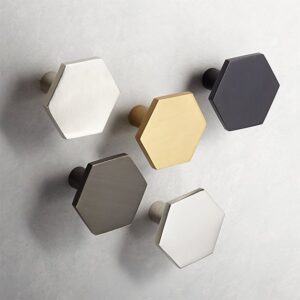 I’ve been getting a lot of questions lately about metal finishes in the home. So let’s break down what’s a “fad” and what’s “timeless” and that sometimes those words might not mean anything to you at all. I’ll say it again, while it’s so easy to say that there are rules in design, sometimes breaking those rules can give you really fun results.
I’ve been getting a lot of questions lately about metal finishes in the home. So let’s break down what’s a “fad” and what’s “timeless” and that sometimes those words might not mean anything to you at all. I’ll say it again, while it’s so easy to say that there are rules in design, sometimes breaking those rules can give you really fun results.
Brass – Yay or Nay?
I’ve been getting asked for the last 5 years if brass is “here to stay”. Over the course of the 2010’s we have seen brass emerge like no other. It seems to be everywhere, in lighting, plumbing, hardware and furniture. To be honest, lately sometimes I have trouble even finding furniture finishes in nickel at all! If you are doing a remodel and are wondering if you should give this modern gold a try, here are my tips.
Stick with a brushed or “living” finish. The brass that we used to associate with 70’s is different from the brass of today. We’re not seeing bright shiny lacquered brass anymore, is more muted with an antique, brushed or matte finish. Living finishes are left unsealed so that it will naturally patina over time, over the years it will dull and darken with exposure to the elements. It’s a part of the character of the piece and not to be considered as defective.
If you’re looking for attitude, use brass. In more contemporary spaces I would definitely say brass “talks” a lot more than the silver finishes. It provides warmth, but also contrast. Brass pulls on cabinetry tend to have more of a jewelry feel than others. It packs a punch and makes a statement, which is why it can be great to use in a small powder room. But brass can also look fabulous in the kitchen as well as full bathrooms in the home. In a more traditional space brass adds a sense of connection to the past and warmth.

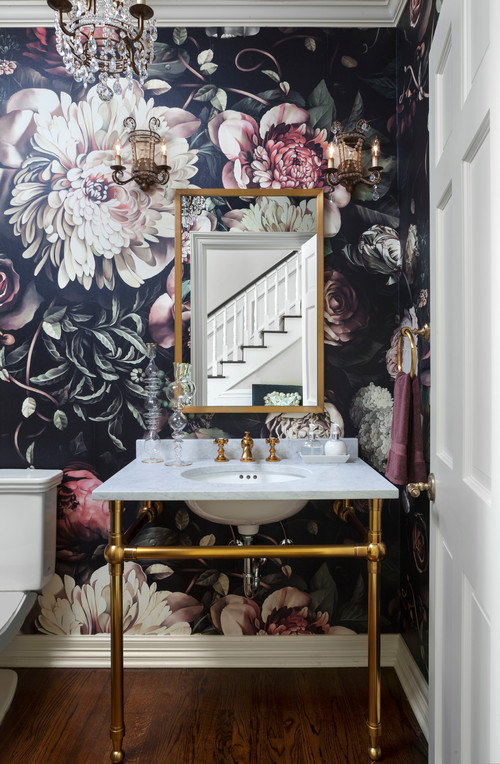
Brass plays well with other saturated colors. Brass fixtures on a deep navy, black, or any colored cabinet add a fun and playful “pop”. And while brass and white absolutely have their place and work excellent together, if you’re doing a whole bathroom in all white marble, I would steer away from using brass. Just a little bit of brass in a big sea of white has a lot less impact and calls me back to the 80’s more than I’d like. Using more saturated colors to contrast allows the warm brass to become emboldened. In today’s bathrooms and kitchens that are trying to go for more of the “simple and clean” feel will do much better with a silver finish like polished nickel.

I love the way the brass pops off these dark base cabinets.
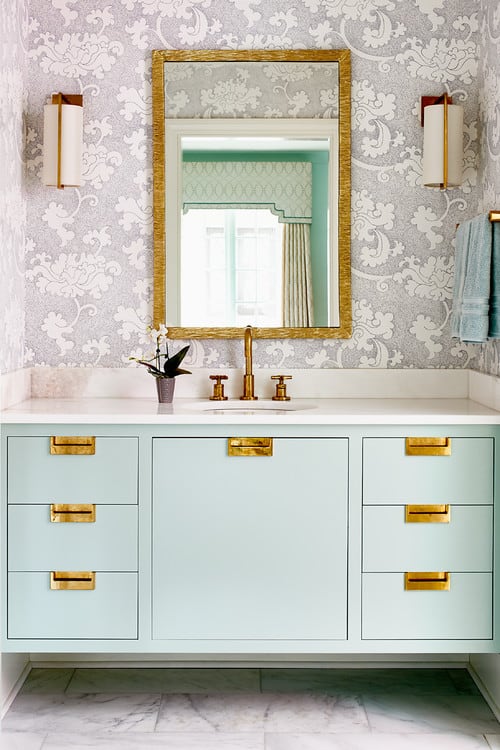
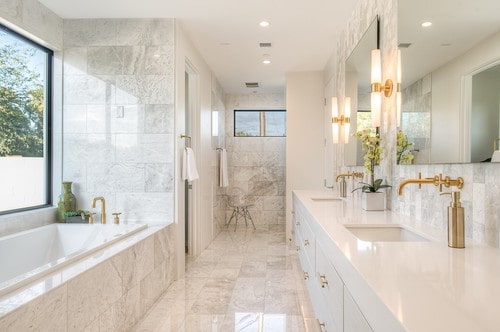
In an all white bathroom I think the brass falls a little flat. Whereas I think nickel tones would really sing here.

Another example of where I would have maybe opted for nickel tones and kept things simple or gone bold with a black finish.
Polished Nickel vs. Brushed
This is another question I get asked all the time! When it comes to “value” or what’s better for resale, I say there’s no real difference. Personally, I love the look and shine of polished nickel, which certainly is more valuable than polished chrome (Chrome is a little colder and less expensive, nickel has more warmth). However, in kitchens and bathrooms a family with young children and sticky fingers might prefer brushed nickel that is less susceptible to showing fingerprints and mess.
Brushed nickel can also give an appearance of a more antiqued look. Where as polished nickel is bright and shiny. Both evoke different looks and feels but both are a very safe option and are a no brainer when you are designing with resale in mind.
What will look the most “Timeless”
The thing about “fads” and “trends” is that they all happen for a reason. Change is good. We all get tired of looking at the same old thing all the time. We’ve all been told for so long that colored appliances of the 70’s were dated, cringe-worthy and bad. But we’ve seen color make a huge resurgence in kitchens. Think about kitchen mixers coming in every color of the rainbow, we’re even seeing sinks in new materials and colors like cherry red and navy blue! I would say we all suffered a little bit of “nickel fatigue” in the early 2010’s when that was the go-to finish for all metal, it was almost as if you didn’t have a choice. Then brass made a resurgence and everyone starting questioning what was a fad and what was here to stay.
In my opinion, there is no wrong. Do what you want and do what you love. I think that mixing metals is a great way to keep everything seeming more relevant. Powder coated black and white mixed with either nickel or brass is a great way to keep your home from being defined in these “nickel” or “brass” boxes. Don’t ever feel like just because you have a finish in one area of the house that it needs to dictate to every single room.
For resale value, I would advise at sticking with your “neutrals”: nickel, black and oil rubbed bronze. They are generally non-offensive and easily palatable to most buyers walking into your home. Although matte black is a newer finish I think it has a lot of staying power because it can be flexible in both modern styles and more traditional shapes being reminiscent of iron and that farmhouse feel. Let’s be honest, black is always in, right?
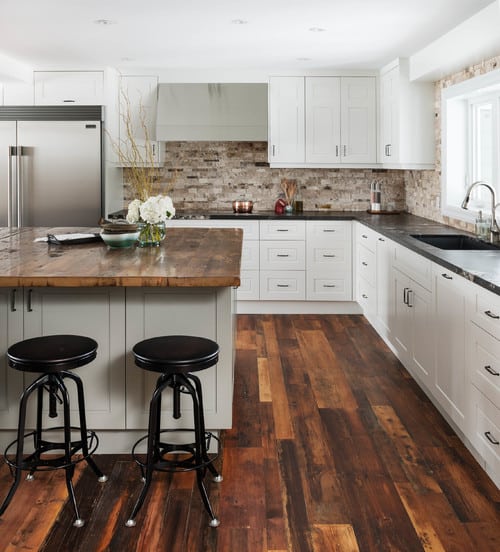
I love the way black hardware looks on white cabinets, it’s feels a little more old school and totally casual.
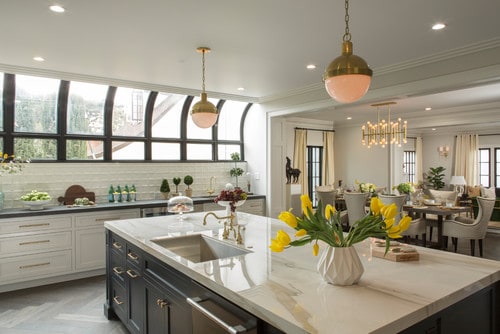
A great example of how to mix metals. Black, brass and stainless steel.
How do I care for my metal finishes?
All metal finishes will need maintenance of some sort. Living finishes will change and patina over time which is the purpose of leaving them unsealed. But be sure to occasionally wipe down to avoid uneven aging. In addition to general cleaning and wiping down it’s a great idea to polish your fixtures at least once a year. This keeps things looking good as new and avoids tarnishing and other build up to accumulate eventually affecting the function of plumbing fixtures. Ask HomeSquare about this service in your home!

Katie Canfield is the founder and principal designer at Studio KC. Studio KC got its humble start in 2015 when Katie was just 23 years old. While she was freelancing with other interior designers in the NY and CT area she also became a go-to designer for local contractors and trades that needed a designer’s help for their clients whether it be for custom cabinetry drawings or plans for a gut renovation on an entire home.
Katie Canfield’s design aesthetic is eclectic and flexible. She delights in the marriage between old and new- keeping spaces approachable but still matching each client’s unique aesthetic and family narrative. Her passion for design keeps her motivated and constantly on the hunt for new trends and materials. Her broad experience includes an art history background, study at the Accademia Italiana in Florence, a stint with the renowned Manhattan firm Amanda Nisbet Design, as well as collaborations with builders and designers across the tri-state area. She’s seen it all: from gutting prewar Manhattan apartments to new construction in the ‘burbs.






2 Comments